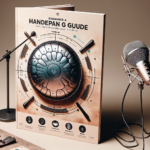<!DOCTYPE html>
<html lang="en">
<head>
<meta charset="UTF-8">
<meta name="viewport" content="width=device-width, initial-scale=1.0">
<title>Handpan Tuning and Care Guide</title>
<style>
body {
font-family: Arial, sans-serif;
line-height: 1.6;
margin: 20px;
}
h1, h2, h3 {
color: #333;
}
ul {
list-style-type: disc;
margin-left: 20px;
}
.faq-section {
margin-top: 20px;
}
</style>
</head>
<body>
<h1>The Ultimate Guide to Handpan Tuning and Care</h1>
<p>The handpan is a captivating and unique musical instrument known for its ethereal sounds and mesmerizing aesthetics. Resembling a flying saucer, it combines aspects of percussion and melody. However, to maintain its enchanting qualities, proper tuning and care are critical. In this guide, we dive into the essentials of handpan tuning and maintenance, ensuring your instrument sounds its best for years to come.</p>
<h2>Understanding the Handpan</h2>
<p>Before delving into tuning and care, it's important to understand what a handpan is and its components. A handpan typically consists of two interconnected steel hemispheres that form a convex shape. Upon its surface, it features a central note (often referred to as the 'ding') surrounded by other notes or tone fields arranged in a circle.</p>
<p>Each handpan is different; some are designed with a specific scale in mind, and each note is delicately tuned to harmonize with the others. This unique layout demands meticulous tuning to maintain its intrinsic sound quality, which can be affected by external conditions like temperature and humidity.</p>
<h2>Running a Basic Diagnosis</h2>
<p>Periodically, it's wise to check your handpan for any signs that tuning might be necessary. Begin by playing each note individually, listening for discrepancies in pitch. A perfectly tuned handpan should have a consistent and harmonious sound for each note. If a note seems off, diagnose by comparing it with a tuning app or another well-tuned instrument.</p>
<h2>Tuning Your Handpan</h2>
<p>Tuning a handpan is an art form and requires not only technical knowledge but also a sensitive ear. While professional tuners are available, understanding the basics can empower you to identify potential tuning issues and, occasionally, make minor adjustments yourself.</p>
<h3>Tools of the Trade</h3>
<ul>
<li><strong>Rubber Mallets:</strong> Used to gently adjust the tuning of notes.</li>
<li><strong>Tuner or Tuning App:</strong> Ensures notes are at their correct pitch.</li>
<li><strong>Microfiber Cloth:</strong> Helps keep the surface clean during tuning.</li>
<li><strong>Ear Protection:</strong> Essential when working on the instrument over extended periods.</li>
</ul>
<h3>Basic Tuning Process</h3>
<ol>
<li><strong>Preparation:</strong> Find a quiet room, free of disruptive noise. Lay the handpan on a soft surface to ensure stability.</li>
<li><strong>Identification:</strong> Unlike other instruments, tuning adjustments are made by delicacy. Use your tuner or app to identify the note needing adjustment.</li>
<li><strong>Adjustment:</strong> With a rubber mallet, gently tap the edges of the tone field. Be cautious: small taps can have a substantial impact. Your goal is to gradually align the pitch with its intended frequency.</li>
<li><strong>Testing:</strong> Continually test the sound after each adjustment. Patience and repetition are key; rushing can lead to errors.</li>
</ol>
<p>Given the intricacies involved, major tuning tasks are best left to a professional tuner. Their experience and equipment ensure precision that is challenging to achieve at home.</p>
<h2>Caring for Your Handpan</h2>
<p>Proper care not only extends the life of your handpan but also maintains its enchanting sound. Here are essential care tips:</p>
<h3>Cleaning</h3>
<p>Handpans can accumulate debris, fingerprints, and moisture, potentially leading to rust. Regularly wipe the surface with a dry or slightly damp microfiber cloth. For deeper cleaning, use specific handpan cleaning solutions or oils designed to protect steel surfaces.</p>
<h3>Storage</h3>
<ul>
<li><strong>Temperature and Humidity:</strong> Handpans require stable conditions. Avoid places with fluctuating temperatures or high humidity, like basements or attics. Ideal storage is at room temperature with moderate humidity.</li>
<li><strong>Positioning:</strong> Always store your handpan in a padded bag or case. This offers protection against accidental knocks and environmental factors.</li>
</ul>
<h3>Handling</h3>
<p>Always handle your handpan with care. Avoid using sharp objects near it or striking it too forcefully. Dropping or impactful knocks can significantly detune or even damage the instrument.</p>
<h3>Regular Check-Ups</h3>
<p>Even with meticulous care, periodic check-ups with a professional tuner are advisable. They can address minor issues before they evolve into more significant problems, ensuring your handpan remains in peak condition.</p>
<h2>Repair and Maintenance</h2>
<p>While regular tuning and gentle care suffice for routine use, accidents may necessitate repairs. Minor dents can often be addressed with gentle techniques, but deeper damage typically requires professional repair.</p>
<h3>Identifying Damage</h3>
<p>Pay attention to any visual or tonal irregularities. If your handpan suddenly sounds off-key or has a noticeable dent affecting its structure, seek professional assistance immediately. Attempting to perform complex repairs without experience can exacerbate the problem.</p>
<h3>Professional Services</h3>
<p>Choose a reputable handpan maker or tuner for repairs. Their expertise and special tooling are vital. Additionally, regular professional maintenance can help spot and rectify potential issues, preserving your handpan's longevity and sound quality.</p>
<h2>Conclusion</h2>
<p>Caring for a handpan extends beyond the occasional cleaning and aesthetic maintenance. The vibration and harmony of its notes depend heavily on consistent and proper tuning, as well as thoughtful handling and storage. Whether you’re a casual player or a budding performer, understanding the nuances of handpan care is crucial for its enduring beauty and sound quality. While some aspects of tuning and maintenance can be handled at home, professional care should not be overlooked. Embracing both DIY and professional support ensures your instrument remains a source of musical inspiration for years to come.</p>
<div class="faq-section">
<h2>Frequently Asked Questions (FAQs)</h2>
<h3>1. How often should I tune my handpan?</h3>
<p>The frequency depends on usage and environmental factors. Regular players might require tuning every 6-12 months, but always consult with a professional if you notice inconsistencies.</p>
<h3>2. Can I use regular cleaning products on my handpan?</h3>
<p>No, avoid regular cleaning products as they may damage the surface or affect the instrument's tone. Use specially formulated handpan cleaning solutions instead.</p>
<h3>3. What should I do if my handpan gets dented?</h3>
<p>Consult a professional immediately. Attempting personal repairs can worsen the damage and detune the instrument significantly.</p>
<h3>4. Is it safe to travel with my handpan?</h3>
<p>Yes, but ensure it’s securely packed in a padded case. Avoid checked baggage on flights due to potential rough handling.</p>
<h3>5. Can I learn to tune my handpan myself?</h3>
<p>While minor adjustments might be achievable with practice, handpan tuning is a specialized skill. It’s recommended to leave significant tuning tasks to experienced professionals.</p>
</div>
</body>
</html>The Ultimate Guide to Handpan Tuning and Care

Leave a comment




